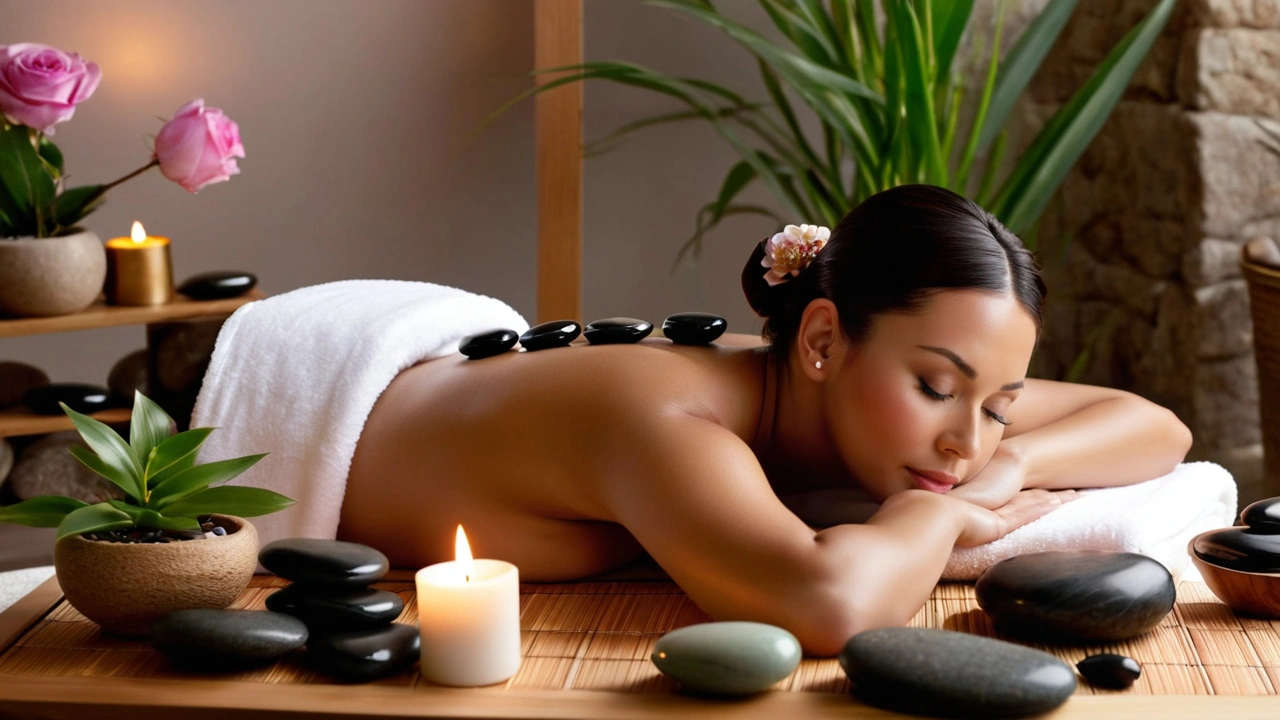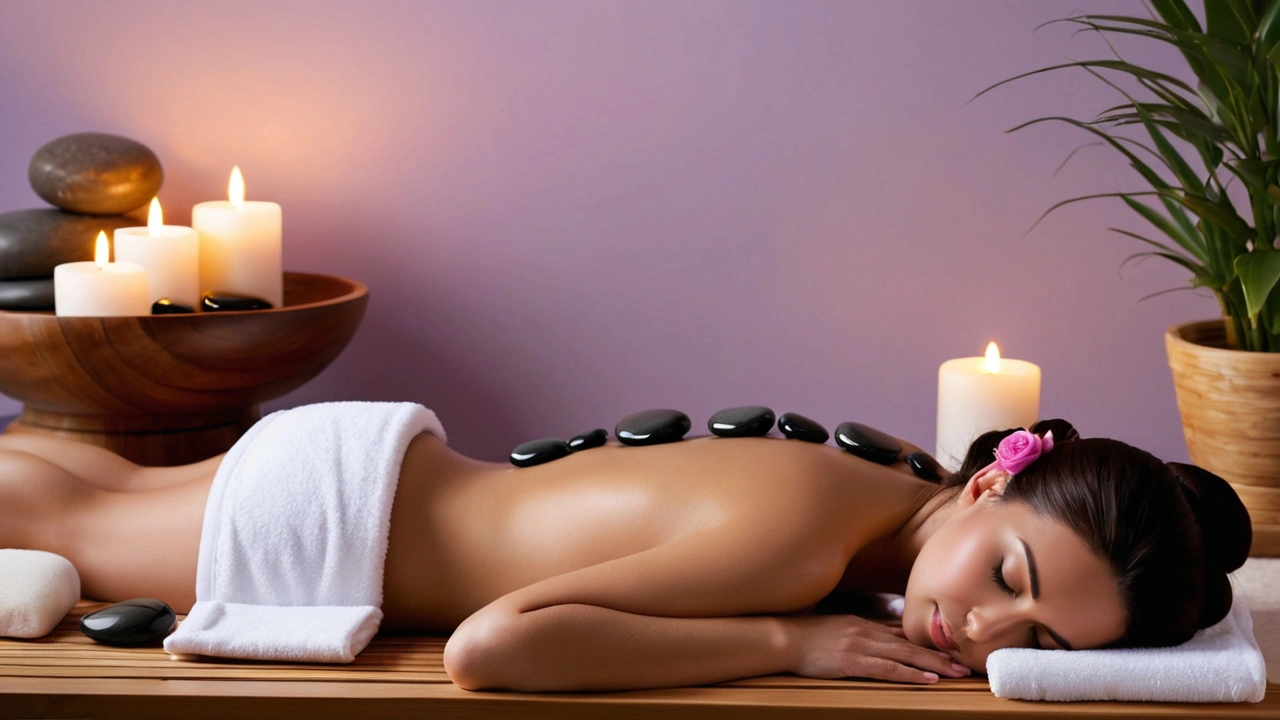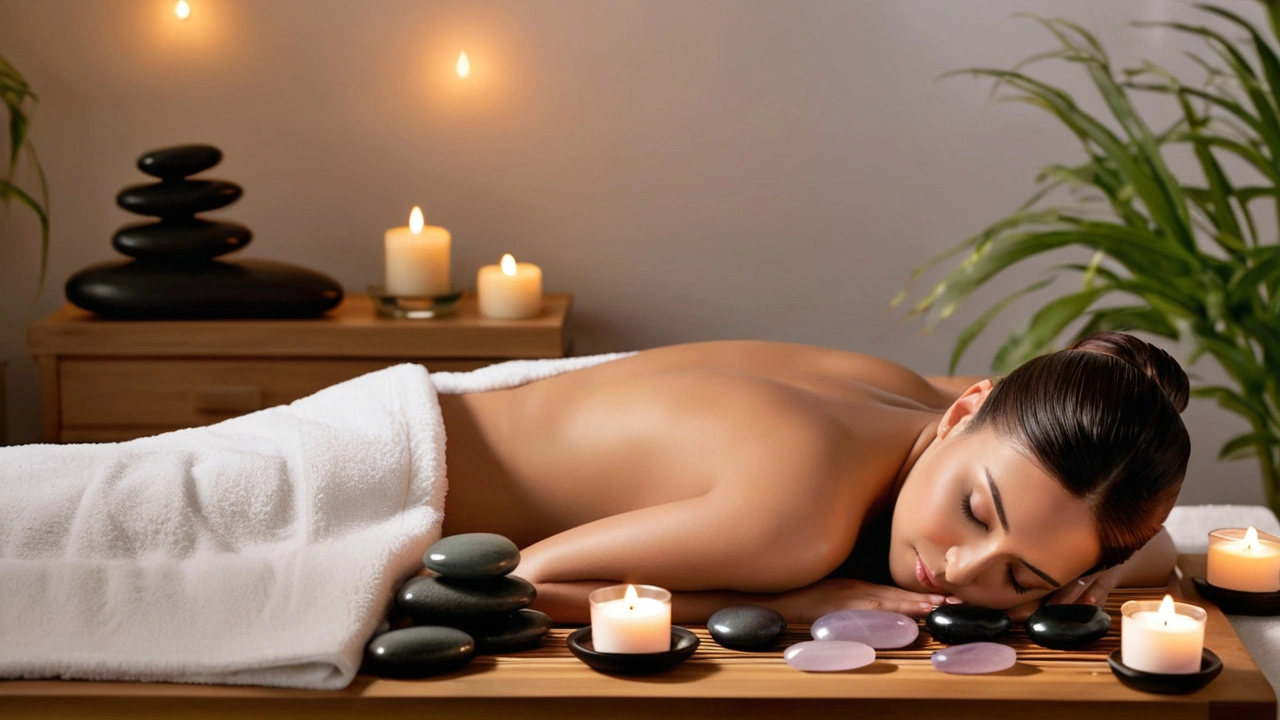Revolutionize Your Wellness Routine with Stone Therapy
 Jul, 23 2024
Jul, 23 2024
Stone therapy is an ancient practice that is gaining a modern following for its profound effects on well-being. It involves using natural stones, typically heated or cooled, to enhance physical and emotional health.
In this article, we will delve into the world of stone therapy, exploring the different types of stones used and how they can benefit you. You'll find practical advice on incorporating stone therapy into your daily life and tips to maximize its benefits. Whether you're seeking stress relief, improved circulation, or simply a greater sense of balance, stone therapy might be just the thing to elevate your wellness routine.
- Understanding Stone Therapy
- Types of Stones and Their Benefits
- How Stone Therapy Works
- Incorporating Stone Therapy into Your Routine
- Tips for Maximizing Benefits
Understanding Stone Therapy
Stone therapy is an intriguing practice rooted in ancient traditions, where stones are used for their healing properties. The use of stones in therapy dates back thousands of years, especially noted in ancient China and Native American cultures. These stones, often smooth and either heated or cooled, are placed on the body or used to massage the skin. The primary aim is to harness their natural energy to promote physical and emotional well-being.
The practice involves different types of stones, each believed to offer unique benefits. For example, basalt stones, known for their heat retention, are commonly used in hot stone massages. These stones can help to relax tense muscles, improve circulation, and ease stress, making them a popular choice. On the other hand, marble stones, which are naturally cool, can help to reduce inflammation and soothe the skin. Together, these stones can create a dynamic and balanced therapeutic experience.
One of the key aspects of stone therapy is its focus on balancing the body's energy. This principle is deeply connected to practices like Reiki and acupuncture, which also emphasize energy flow. By placing stones on specific points of the body, therapists aim to remove blockages and encourage a smooth energy flow, promoting overall health and harmony. This holistic approach is what sets stone therapy apart from other forms of massage or wellness practices.
"The application of heat or coolness to the body using stones can profoundly affect the organ systems and energetic channels," says Dr. Amy Green, a well-known holistic health expert. "Incorporating stones into therapy sessions can amplify the healing process and contribute to a deeper sense of relaxation and rejuvenation."
Interesting facts about stone therapy include its versatility. This therapy isn't limited to a specific demographic or condition. It's used in luxury spas, wellness centers, and even in home settings. The stones can be used in various ways, such as in facial treatments or incorporated into yoga routines. The adaptability of stone therapy makes it accessible and beneficial for almost everyone, regardless of age or physical condition.
The effectiveness of stone therapy often hinges on the therapist's skill and knowledge. A trained therapist understands the significance of each stone and its placement. They know how to adjust the temperature to suit the client's comfort and needs. This expertise ensures that each session is tailored to provide maximum benefits, contributing to the overall popularity and respect for stone therapy as a legitimate wellness practice.

Types of Stones and Their Benefits
Stone therapy utilizes various types of stones, each offering unique benefits for improving physical and emotional well-being. These stones can be heated, cooled, or used at room temperature during treatment. The right choice of stones can provide a tailored experience suited to your specific needs.
One of the most popular types used in stone therapy is the Basalt stone. These volcanic stones are rich in iron and are known for their ability to retain heat. Basalt stones are ideal for providing deep tissue relaxation and alleviating muscle tension. They are typically used in hot stone massages, which can enhance blood circulation and soothe chronic pain.
Another significant stone is Marble. Unlike basalt, marble stones are often used chilled to reduce inflammation and improve energy flow. The cooling effect of marble stones can help manage swelling and reduce stress. They are excellent for people seeking a refreshing and rejuvenating experience.
For those looking into the spiritual aspects of stone therapy, Amethyst is frequently used. This purple quartz is believed to have calming properties that can aid in reducing anxiety and stress. Many practitioners incorporate amethyst in meditation sessions, combining its healing vibrations with mindfulness practices for an enhanced sense of peace.
Another stone worth mentioning is Jade. Traditionally valued in East Asian cultures, jade is believed to have multiple healing properties, including boosting the immune system and detoxifying the body. When used in massage, jade stones are said to promote serenity and balance while revitalizing the skin.
In addition to these stones, some therapists may use Obsidian, known for its protective energy, or Rose Quartz, which is associated with love and emotional healing. Selecting the right stones can be a personal journey, often requiring guidance from a knowledgeable therapist to identify what will work best for your individual wellness goals.
According to the International Journal of Therapeutic Massage & Bodywork, "Using heated basalt stones during massage has shown significant benefits in muscle relaxation and stress reduction, proving its effectiveness in therapeutic settings."
The benefits of these stones are largely attributed to their physical properties and the natural elements they contain. When incorporated correctly, stone therapy can significantly enhance your wellness routine by addressing both physical discomfort and emotional stress, making it a versatile and holistic approach to health.

Incorporating Stone Therapy into Your Routine
Integrating stone therapy into your daily routine can be both relaxing and beneficial for your well-being. One simple way to start is by using heated stones during your morning shower. Place a few small stones in the bottom of the shower and let the water run over them. The warm, smooth surfaces can help ease tension in your feet and promote a calm start to your day.
You might also consider adding stone therapy to your bedtime routine. A popular method is placing a warm stone at the foot of your bed to help ease any residual stress from the day. The heat from the stone gradually soothes tired muscles and creates a tranquil environment conducive to better sleep.
For a more structured approach, including stone therapy during your meditation or yoga sessions can significantly enhance your practice. Place stones on specific points of your body, like the forehead or stomach. The natural energy from the stones can help center your focus and deepen relaxation. Many people find that incorporating stones into their yoga practice amplifies their connection to the earth and their inner peace.
If you're a fan of aromatherapy, combining it with stone therapy can elevate both experiences. Diffuse essential oils while placing stones on pressure points around your body. This dual approach can lead to an enhanced state of relaxation and mental clarity, making this method particularly effective for unwinding after a long, stressful day.
It's also worth mentioning that stone therapy can be easily integrated into your skincare routine. Many spas offer facial treatments that use chilled stones to reduce puffiness and improve circulation. At home, you can replicate this by keeping a few stones in your refrigerator and applying them gently to your face in the morning. The cooling sensation can invigorate your skin and reduce any morning swelling, giving you a fresh start to your day.
Workspaces can benefit from stone therapy too. Keeping a few small stones on your desk can serve as stress-relief tools during the workday. When you feel overwhelmed, take a moment to hold a cool stone in your hand, close your eyes, and breathe deeply. This brief pause can help reset your focus and reduce anxiety, making you more productive.
Some people even take their love for stone therapy a step further by incorporating it into their meals. Cooking with Himalayan salt blocks, for instance, not only infuses your food with essential minerals but also provides a unique way to enjoy the therapeutic benefits of stones. These blocks can be heated or chilled, offering versatile cooking options while enhancing the flavor and health benefits of your meals.
For those who enjoy a more social approach, stone therapy can also be part of a shared experience. Hosting a stone therapy evening with friends can be a fun and relaxing way to bond. Provide a variety of stones and essential oils, and create a serene atmosphere with calming music and dim lights. This can turn an ordinary get-together into a rejuvenating mini-retreat for everyone involved.

Tips for Maximizing Benefits
To get the most out of your stone therapy sessions, it's important to follow some practical tips that can enhance the experience. The first key point is consistency. Like any form of therapy, stone therapy works best when it is part of a regular routine. Aim to incorporate it into your wellness schedule at least once or twice a week. Consistency helps your body and mind to familiarize themselves with the therapy, amplifying the benefits over time.
An often overlooked aspect is the importance of choosing the right stones. Different types of stones offer unique benefits. For example, hot basalt stones are renowned for their ability to improve blood circulation and relax muscle tension. On the other hand, cool marble stones can help reduce inflammation and invigorate the senses. Take the time to understand which stones align with your specific needs before you start your sessions.
Creating a relaxing environment can significantly enhance the efficacy of stone therapy. Dim the lights, play soothing music, and ensure the room temperature is comfortable. Adding essential oils can also elevate your experience. Scents like lavender and eucalyptus not only complement the therapy but can also aid in relaxation and stress reduction.
Hydration plays a crucial role in maximizing the benefits of stone therapy. Drinking plenty of water before and after your session helps in flushing out toxins released during the therapy. This aids in faster recovery and amplifies the overall benefits, making you feel rejuvenated.
Another useful tip is to combine stone therapy with other wellness practices like meditation or yoga. Doing so can enhance the mental and emotional benefits, helping you achieve a more holistic state of well-being. Aligning your therapy sessions with routines that promote mental health can provide comprehensive benefits that affect not just your body, but also your mind.
According to the American Massage Therapy Association, “Incorporating multiple holistic practices can lead to substantial improvements in both physical and emotional well-being.”
Monitoring your progress is another useful strategy. Keep a journal to document how you feel after each session. Noting down specifics like muscle tension, stress levels, and overall mood can help you track improvements and adjust your sessions for optimal results. This simple exercise can provide valuable insights into which techniques work best for you.
Lastly, never underestimate the power of professional guidance. Consulting a trained stone therapist can provide you with personalized advice tailored to your unique needs. Professional therapists have the expertise to guide you on how to use different stones effectively, helping you achieve maximum benefits from your sessions.
